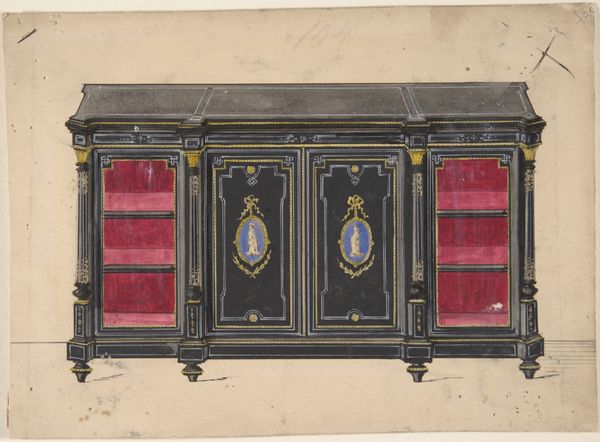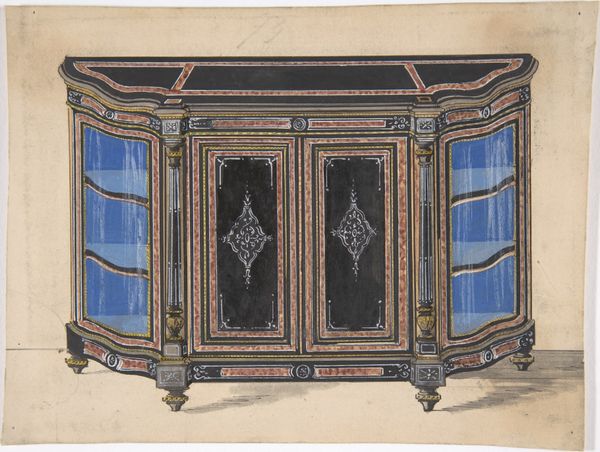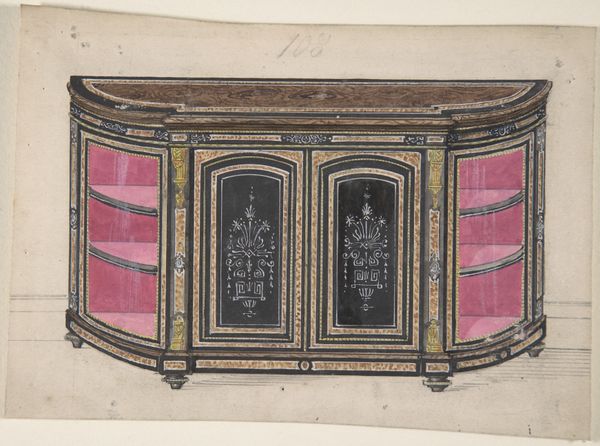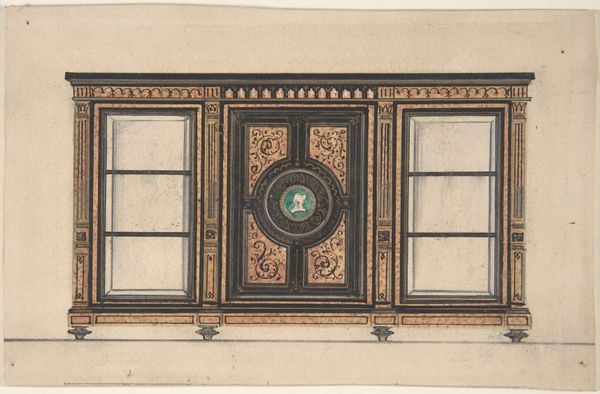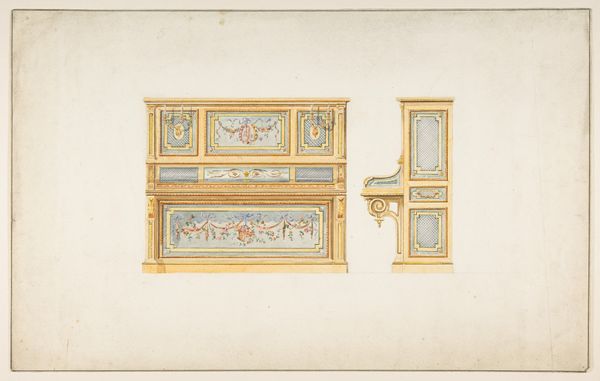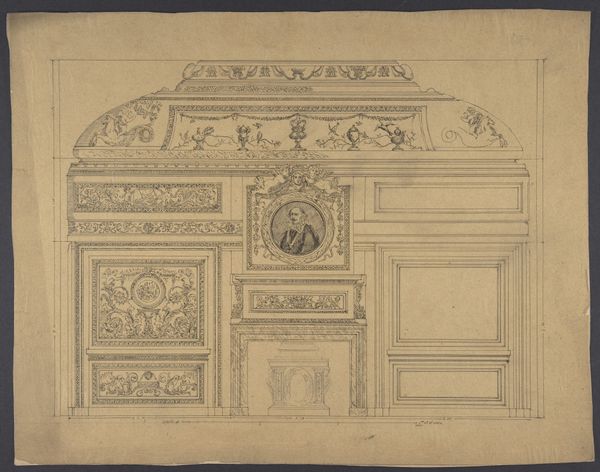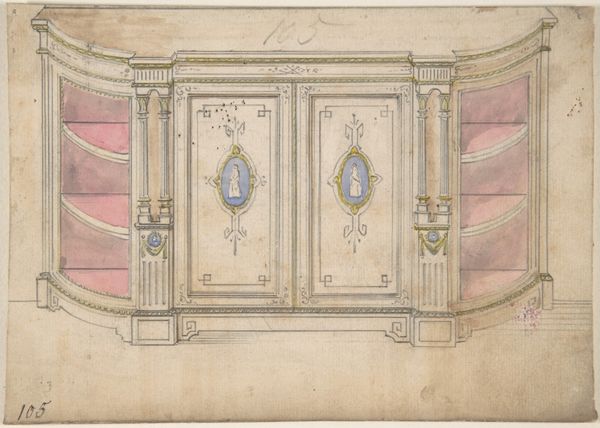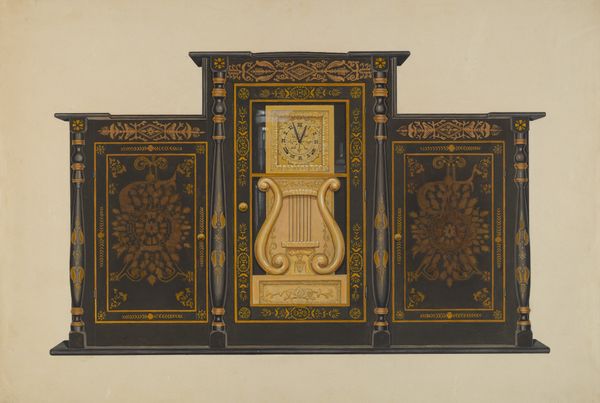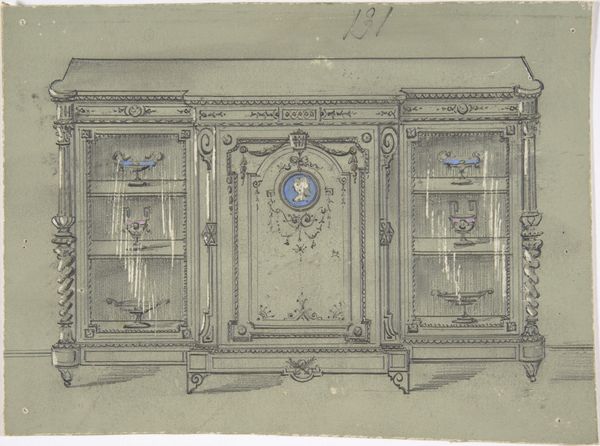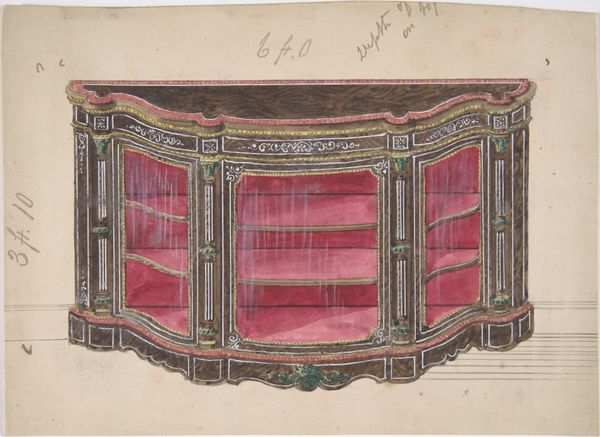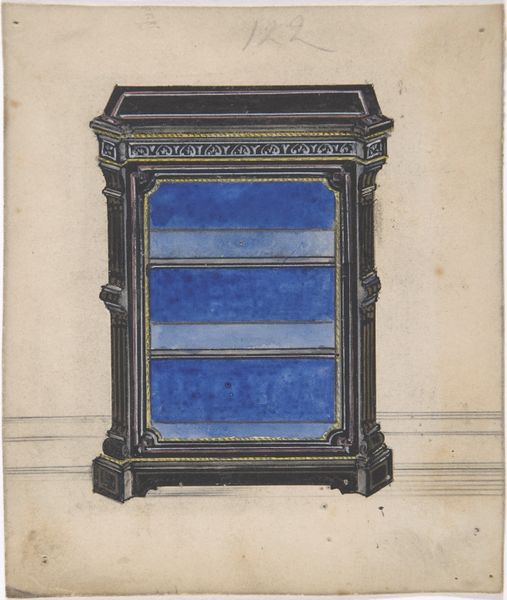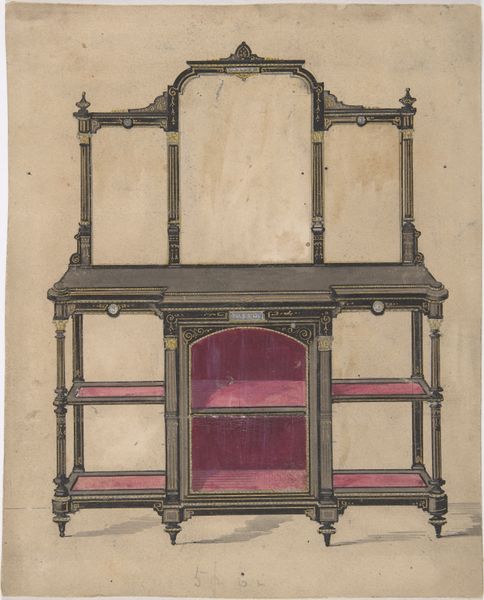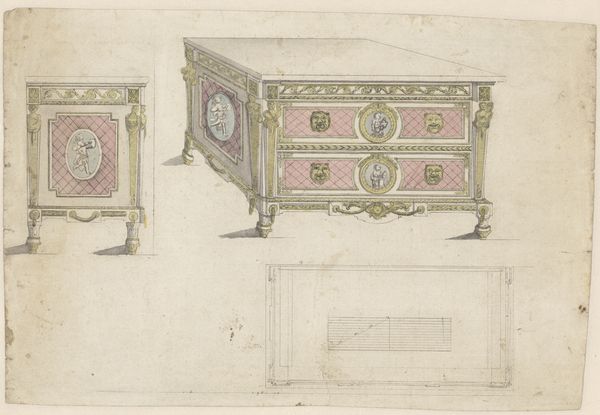
Cabinet Design with Renaissance style Ornament and Red Interior 1800 - 1900
0:00
0:00
drawing, print, watercolor
#
drawing
# print
#
furniture
#
11_renaissance
#
watercolor
#
academic-art
#
decorative-art
#
watercolor
Dimensions: sheet: 5 1/8 x 7 3/16 in. (13 x 18.3 cm)
Copyright: Public Domain
Curator: The rendering before us, an intriguing "Cabinet Design with Renaissance Style Ornament and Red Interior," created anonymously between 1800 and 1900, captures an aesthetic ideal, a revivalist echo. Editor: My immediate impression is one of restrained opulence. The colour palette – those muted blues, reds and gold highlights – whispers of wealth but the meticulous details hint at careful artisanship and handcrafting more than industrial manufacture. Curator: Indeed. Note how this piece appropriates Renaissance motifs. But it also subtly critiques that era's power structures by democratizing high-style ornamentation, almost making luxury accessible, or at least representable, to a wider audience. We must consider the political landscape. Editor: Exactly. The very choice of materials—watercolor, drawing, and print—speaks volumes. While intending to portray something lavish and handmade, it’s ultimately a paper product; thus, cheaper and replicable. Look at the precision, too: were such designs guides, then, for cabinet makers? Instructions on what kind of labour should happen to produce luxurious display? Curator: Perhaps even serving as tools for aspiration, shaping desires, particularly within a rising middle class emulating aristocratic tastes. This connects directly with feminist theory when considering women's domestic roles within these spaces. Where would such an object be placed, and by whom would it be seen? Who's reflected in these interiors? Editor: And also consider that, perhaps this cabinet was designed for women's space: think about women’s craftwork like needlepoint which are themselves materials or textile production often deemed less "fine" or less worthy in value production because it is associated with a particular kind of domestic labor Curator: A fascinating material consideration alongside questions of visibility and artistic legitimacy. How the ornamental aspect may be intrinsically gendered too, by implication. Editor: Absolutely. Rethinking material and use offers fascinating angles on art history and design. What objects would fill these shelves and what did displaying it mean, too? Curator: Thinking about material allows a deeper understanding that challenges these preconceived ideas around value, legitimacy, visibility within our current day.
Comments
No comments
Be the first to comment and join the conversation on the ultimate creative platform.
